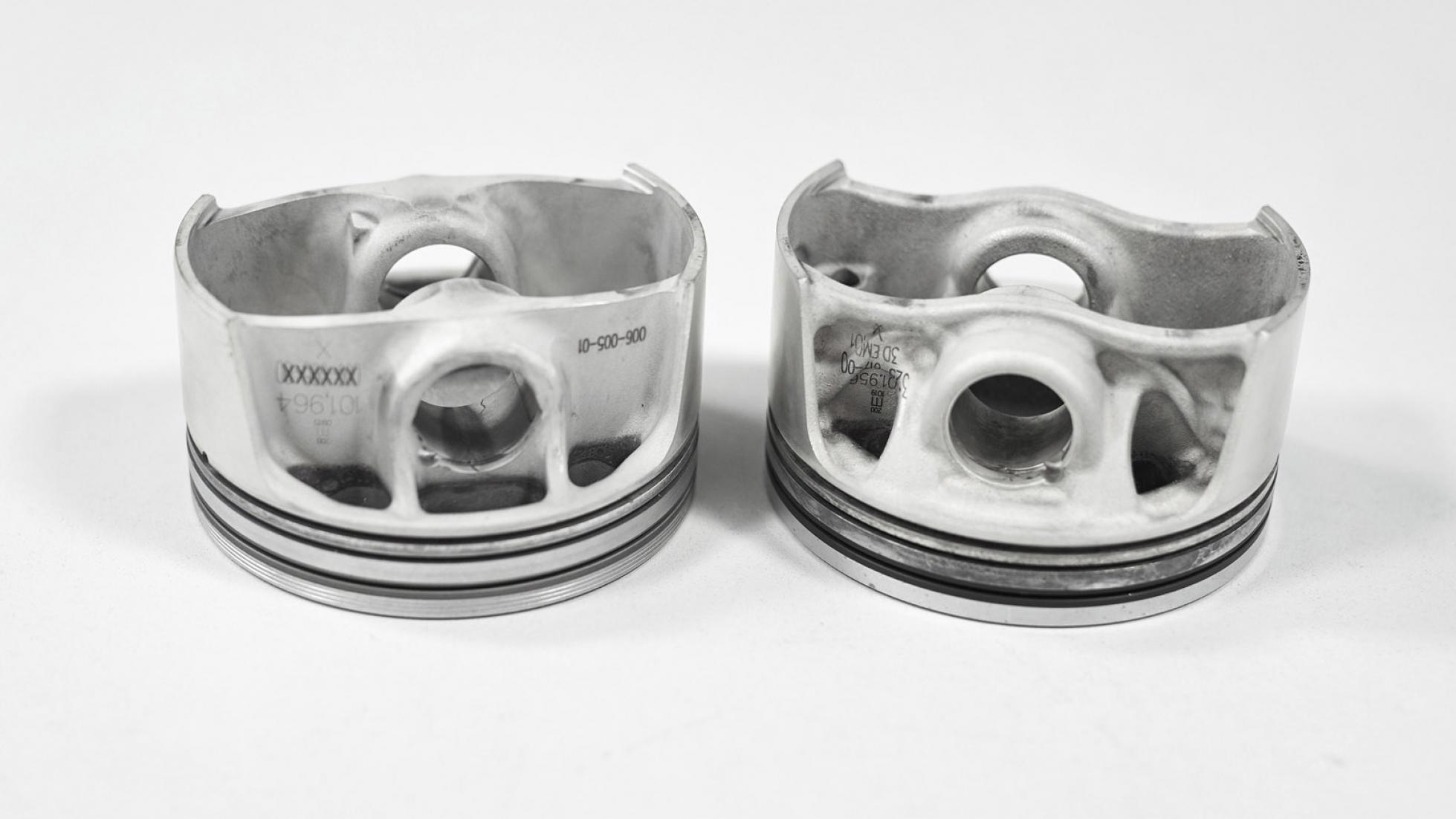Porsche’s 3D-printed pistons give the 911 GT2 RS 30 extra horsepower





Calm down, GT2 RS owners of TopGear.com. Porsche isn’t about to start selling 3D-printed pistons to existing owners of the fastest, most powerful and most expensive of all 991-era 911s.
Sorry. It’s just showing off. Giving us a glimpse of the kind of thing it’ll be able to do in a few years’ time, when mass-manufacturing 3D-printed parts becomes a thing
Porsche already 3D prints components – you can get custom 3D-printed seat centres for 911s and 718s, and more than 20 parts from Porsche Classic’s catalogue – like the clutch release lever for the 959 – are manufactured in this way.
But it wants to do more – first because 3D-printing allows for stronger, lighter components made from new, exotic materials.
It gives the designers more freedom, too, and brings logistical advantages during production and prototyping of new models.
The company’s 3D-printed pistons weigh ten per cent less than the standard forged items, and they’re stronger, with a design that’s been “optimised by means of artificial intelligence”.
An integrated cooling duct is built-in to the piston crown – something that would not have been possible using traditional manufacturing methods.

Frank Ickinger, from Porsche’s advance drive development department, says the new, lighter pistons, developed with help from engineering companies Mahle and Trumpf, mean powertrain engineers can “increase the engine speed, lower the temperature load on the pistons and optimise combustion”.
“This makes it possible to get up to 30hp more power from the 700hp biturbo engine, while at the same time improving efficiency.”
But 3D-printing isn’t quite ready to handle the mass-manufacture of engine components like pistons just yet.
Cost is a factor, and Ickinger says the company “has to work on quality management – so you always get the same quality”.
“But it’s possible,” he says “It is not series-production ready yet, but I think in five years. Maybe a little bit earlier, we’ll see.”
Porsche will test out the new tech on special models first (maybe next-gen GT cars…), before rolling it out across its range.
STORY Tom Harrison









